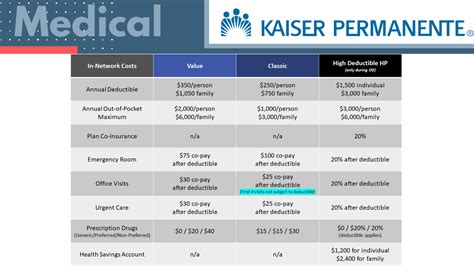Intro
Discover who owns Kaiser Permanente, a leading healthcare organization, and explore its structure, leadership, and mission, including Kaiser Foundation Hospitals and health plan services.
Kaiser Permanente, commonly known as Kaiser, is a large American integrated managed care consortium. The organization is based in Oakland, California, and operates in several states, including California, Colorado, Georgia, Hawaii, Maryland, Oregon, Virginia, and Washington. Understanding who owns Kaiser Permanente requires a look into its structure and history.
Kaiser Permanente is a nonprofit organization, which means it does not have shareholders or owners in the traditional sense. Instead, it is governed by a board of directors that oversees the organization's operations, strategy, and direction. The board is composed of members who are chosen for their expertise in healthcare, business, and community leadership.
The organization was founded in 1945 by Henry J. Kaiser and Sidney Garfield. Henry J. Kaiser was an American industrialist who made his fortune in the construction and shipbuilding industries during World War II. Sidney Garfield, on the other hand, was a physician who pioneered the concept of prepaid healthcare. The two men joined forces to create a healthcare system that would provide high-quality, affordable care to Kaiser's shipyard workers and their families.
Over time, Kaiser Permanente has evolved into one of the largest and most successful healthcare organizations in the United States. It operates on a nonprofit basis, which means that any surplus funds are reinvested into the organization to improve its services, facilities, and technology.
One of the unique aspects of Kaiser Permanente's structure is its relationship with the Permanente Medical Groups, which are independent, self-governing medical groups that contract with Kaiser Foundation Health Plan to provide medical care to Kaiser Permanente members. The Permanente Medical Groups are responsible for the medical decisions and care provided to patients, while Kaiser Foundation Health Plan handles the administrative and financial aspects of the organization.
In terms of ownership, Kaiser Permanente is a complex entity with multiple components. The organization is composed of several subsidiaries, including Kaiser Foundation Health Plan, Inc., Kaiser Foundation Hospitals, and the Permanente Medical Groups. Each of these entities has its own governance structure and leadership, but they all work together to provide a comprehensive and integrated healthcare system.

History of Kaiser Permanente
Kaiser Permanente has a rich and fascinating history that dates back to the 1930s. The organization was founded by Henry J. Kaiser and Sidney Garfield, who shared a vision of providing high-quality, affordable healthcare to workers and their families.
During the Great Depression, Kaiser was building the Grand Coulee Dam in Washington state, and he needed a way to provide medical care to his workers. Garfield, who was a young physician at the time, was hired to create a healthcare system for Kaiser's workers. Garfield's innovative approach to healthcare included prepaid medical care, group practice, and preventive medicine.
The success of Garfield's healthcare system at the Grand Coulee Dam led to the creation of Kaiser Permanente in 1945. The organization quickly grew and expanded to other locations, including California, Oregon, and Hawaii.
Today, Kaiser Permanente is one of the largest and most successful healthcare organizations in the United States, with over 12 million members and a reputation for providing high-quality, patient-centered care.

Benefits of Kaiser Permanente
Kaiser Permanente offers a range of benefits to its members, including high-quality medical care, affordable premiums, and a wide range of health and wellness programs.
One of the key benefits of Kaiser Permanente is its emphasis on preventive care. The organization offers a range of preventive services, including routine check-ups, screenings, and vaccinations, to help members stay healthy and prevent illnesses.
Kaiser Permanente also offers a range of specialty services, including cardiology, oncology, and neurology, as well as a network of hospitals and medical offices.
In addition to its medical services, Kaiser Permanente also offers a range of health and wellness programs, including fitness classes, nutrition counseling, and stress management.

Key Features of Kaiser Permanente
Some of the key features of Kaiser Permanente include:
- High-quality medical care: Kaiser Permanente is known for its high-quality medical care, with a focus on preventive medicine and patient-centered care.
- Affordable premiums: Kaiser Permanente offers competitive premiums and a range of plan options to fit different budgets and needs.
- Wide range of health and wellness programs: Kaiser Permanente offers a range of health and wellness programs, including fitness classes, nutrition counseling, and stress management.
- Network of hospitals and medical offices: Kaiser Permanente has a network of hospitals and medical offices, making it easy for members to access care when they need it.
Overall, Kaiser Permanente is a unique and innovative healthcare organization that offers a range of benefits and services to its members.

How Kaiser Permanente Works
Kaiser Permanente is a complex organization with multiple components, but at its core, it is a prepaid healthcare system. Members pay a monthly premium, which covers a range of medical services, including doctor visits, hospital stays, and prescriptions.
Kaiser Permanente has a network of hospitals, medical offices, and healthcare providers who work together to provide care to members. The organization uses a team-based approach to care, with physicians, nurses, and other healthcare professionals working together to provide comprehensive and coordinated care.
One of the key features of Kaiser Permanente is its electronic health record system, which allows healthcare providers to access patient information and medical history easily. This helps to ensure that patients receive high-quality, coordinated care, and reduces the risk of medical errors.
Kaiser Permanente also has a strong focus on preventive care, with a range of programs and services designed to help members stay healthy and prevent illnesses.

Steps to Join Kaiser Permanente
Joining Kaiser Permanente is a straightforward process that involves several steps:
- Check eligibility: The first step is to check if you are eligible for Kaiser Permanente. This typically involves checking your income level, family size, and other factors.
- Choose a plan: Once you have determined that you are eligible, you can choose a plan that meets your needs and budget.
- Apply for coverage: The next step is to apply for coverage, which typically involves filling out an application and providing documentation.
- Pay premiums: Once you have been approved for coverage, you will need to pay your premiums on a monthly basis.
- Access care: Finally, you can access care through Kaiser Permanente's network of hospitals, medical offices, and healthcare providers.
Overall, joining Kaiser Permanente is a relatively simple process that can provide access to high-quality, affordable healthcare.

FAQs
What is Kaiser Permanente?
+Kaiser Permanente is a nonprofit healthcare organization that provides high-quality, affordable care to its members.
How does Kaiser Permanente work?
+Kaiser Permanente is a prepaid healthcare system, where members pay a monthly premium to access a range of medical services.
What are the benefits of Kaiser Permanente?
+The benefits of Kaiser Permanente include high-quality medical care, affordable premiums, and a wide range of health and wellness programs.
In conclusion, Kaiser Permanente is a unique and innovative healthcare organization that offers a range of benefits and services to its members. With its emphasis on preventive care, team-based approach, and electronic health record system, Kaiser Permanente is well-positioned to provide high-quality, patient-centered care to its members. Whether you are looking for a new healthcare provider or just want to learn more about Kaiser Permanente, we hope this article has provided you with the information you need to make an informed decision.
We invite you to share your thoughts and experiences with Kaiser Permanente in the comments below. Have you had a positive experience with Kaiser Permanente? Do you have any questions or concerns about the organization? Let us know, and we will do our best to respond to your comments and provide additional information.
